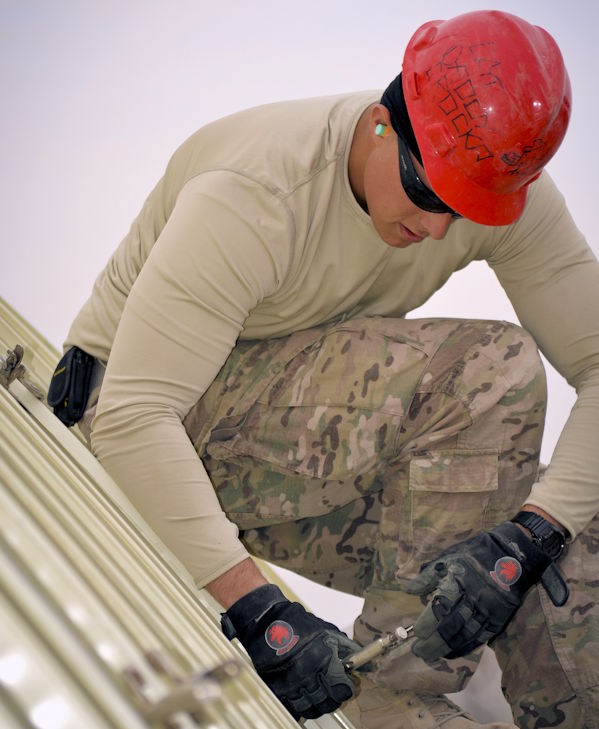Force-Related Risk Factors
Contact Trauma
When any part of your body presses against an external object, the resulting sustained force may cause too much mechanical stress on tissues. It is also possible for excessive mechanical stress to be produced from the impact shock of an object against a part of the body.
Grip
There's a right way and a wrong way to grip an object. This combination of force and posture, if not accomplished correctly, may result in harm to the hand. Two basic grips are used when handling tools, equipment or materials.
- The Pinch Grip depends on the fingers to exert the force and manipulate the object. This grip strategy requires much greater muscle strength and, consequently, is more likely to cause an injury.
- The Power Grip uses the muscles of the entire hand to apply force and manipulate objects. Consequently, it's the most effective and safest grip to use.
Static Exertion
Standing, sitting, or otherwise remaining in one posture for a long duration while you perform a task can increase the likelihood of injury. Static exertion combines force, posture, and duration to create a condition that quickly fatigues our muscles which increases the chances of acquiring a cumulative trauma disorder (CTD). The greater the force, more awkward the posture, and longer the duration, the greater the risk. See the Symptoms of Excessive Static Load chart by clicking the link below.
Symptoms of Excessive Static Load
| Symptoms | Possible Ergonomic Cause |
|---|---|
| Feet, legs ache, varicose veins | Standing in one place too long |
| Lower back pain | Trunk curved forward while standing or sitting |
| Shoulder and arm pain | Arms outstretched, sideways, forward or upwards; Shoulders forced up due to position of work |
| Neck pain | Head inclined too much backwards or forward |
| Forearm pain | Unnatural grip, static grip too forceful |
| Wrist pain | Repetitive hand or finger motion |
Clothing
Have you ever worn thick leather gloves while trying to accomplish some kind of intricate manipulation of small objects? Try it, you will be frustrated. Whenever you wear gloves, more grip force is required to do a particular task. With the need for more force, increased risk of injury occurs.
Wearing bulky clothes, like heavy rain gear or protective clothing for removing hazardous waste, will increase the effort required by muscles to do work. Any time you increase the force necessary to complete a task, risk of injury also increases.
Knowledge Check Choose the best answer for the question.
3-4. Which grip strategy used to manipulate objects requires much greater muscle strength, and therefore is more likely going to cause an injury?
You forgot to answer the question!

